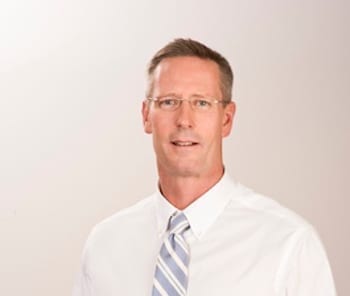Dan van Holst Pellekaan, the energy minister in the newly elected South Australia Liberal government, has vowed to continue the state’s dramatic energy transition and show other states “how it can be done”.
In a keynote speech to the Australian Energy Storage conference and exhibition in Adelaide on Wednesday, van Holst Pellekaan said expectations that the election of a Liberal government would be the end of clean energy in the state were false.
“We heard about the end of renewables and return to energy systems of the past,” van Holst Pellekaan said.
“The transition is underway, and the transition will continue. It is being driven by the fundamental economics of clean energy as the lowest cost new build energy source.
“South Australia will lead and show the world how a sensible transition can be done.”
In the speech, and in a later interview with RenewEconomy that readers will be able to download next week from our Energy Insiders podcast, van Holst Pellekaan says the focus will be on an “orderly transition” built around storage.
And apart from large-scale storage projects such as the Tesla big battery at Hornsdale and other battery storage projects, pumped hydro, hydrogen and solar thermal, he said his government was keen to embrace household storage
Van Holst Pellekaan also made it clear that the proposed 40,000 batteries that would be installed as the result of the Liberals $100 million subsidy scheme would be “connected”, possibly working as a virtual power plant, although the final details had not been worked out.
This is a significant step forward and it is understood it comes after the government was swamped by enquiries from battery storage manufacturers and developers, all keen to promote the idea of pooling household storage to create an important grid asset, and reduce costs.
The new energy minister also held out hope that the Tesla plan for a 250MW “virtual power plant” combining solar and storage on 50,000 low-income homes could still emerge, as could other schemes involving sonnen and a possible manufacturing base.
“We will not throw the baby out with the bath water,” he said. “The Liberal government means more, not fewer, batteries. And we are excited about the opportunities for battery assembly.”
The various initiatives could see South Australia emerge with some 100,000 household batteries – the equivalent to more than one in ten homes.
That will provide an immensely valuable resource for the local grid, which is likely to see rooftop solar production exceed minimum demand on some occasions within 10 years.
Uncertainty around the government’s plans for the household storage scheme was cited as a major factor in the sharp drop in rooftop solar installations in April, as many households decided to wait until a decision was made.
There is also concern that the lack of a visible and stated renewable energy target will be an impediment in the industry, even though Labor’s much vaunted targets had only ever trailed what was expected to be built.
Van Holst Pellekaan says the Liberal government rejects renewable targets, but referred nevertheless to the inevitability of striving to a 100 per cent renewable energy future.
“It is also important to recognise that while we strive for a 100 per cent renewables world, gas will play a necessary part in our generation mix for a while to come,” he said in his speech.
“The proportion of clean energy will continue to rise. We will not set targets, but we will focus on delivering cleaner and more affordable and reliable energy for our state.”
In the end, the transition is likely unstoppable in any case, given that the state has already reached more than 50 per cent wind and solar, and the projects already under construction and planned by the likes of Sanjeev Gupta will take it beyond the Labor target of 75 per cent renewables.
Van Holst Pellekaan finds himself at the heart of that transition. His electorate of Stuart covers many of the state’s major renewable and storage projects.
His home is in a small town just south of Port Augusta, where two brown coal generators are being replaced by a 220MW solar farm, a 212MW wind farm with battery storage, and the world’s biggest solar tower with molten salt storage.
Van Holst Pellekaan said the contracts for the solar tower from the South Australian government, and for $110 million in funds from the federal government, were still in place and it was now waiting for SolarReserve to confirm its plans and land the rest of the finance.
The minister said the Tesla big battery, operated by Neoen, had clearly captured the world’s attention with its key role in grid stability services, its response to major trips and its faster reaction time than thermal generator.
He also spoke about the need to develop “big data” and “machine learning” as the state moved into the world’s largest non-synchronous electricity grid – a theme also taken up by AEMO chief Audrey Zibelman.
And he talked of the importance of a new connection with NSW, which unlike Victoria had different weather conditions and offered the opportunity to trade energy.
Van Holst Pellekaan spoke of a renewable energy zone to be built in the area to the east of the state, adjoining a similar zone in the west of NSW.
And he spoke of the need to decarbonise transport and his government’s interest in electric vehicles.
“The biggest contribution we can make to lower carbon emissions is to make electricity clean and more affordable so the uptake can happen more swiftly.
“By showing how it is done, other states and countries can also plan their (clean energy) transitions.”











